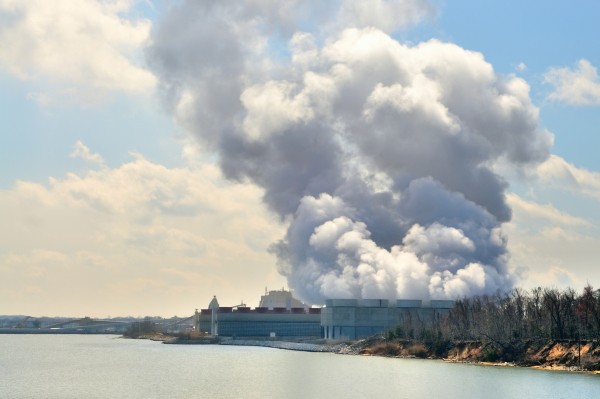State, Campus Draw on GEOG Research for Progress Checks on Greenhouse Gas Emissions
A new report published by the Maryland Department of the Environment (MDE) shares that the state is on track to meet its 2030 greenhouse gas (GHG) targets—and is the first in the nation to use a remote-sensing based system for measuring how much carbon is stored in forests. The system in use was led by University of Maryland Department of Geographical Sciences Professor George Hurtt.
In addition to highlighting how the state has exceeded its 2020 goal of reducing GHG emissions by 25% compared to 2006 levels (2020 statewide emissions were 30% below the 2006 baseline), the report also uses insights from the forest carbon monitoring system to call attention to the role that forests can play in further reducing GHG emissions.
“Under Governor Hogan’s leadership, Maryland is a national leader in combating climate change,” MDE Secretary Horacio Tablada said in a release. “This progress report tells the story of our state’s progress, and highlights the important need for continued and sustained action and support to meet our goals.”
The new forest carbon monitoring system—a product of the NASA Carbon Monitoring System—is a collaborative effort between the University of Maryland (represented by Hurtt’s team), MDE, Maryland Department of Natural Resources, United States Climate Alliance, United States Forest Service, University of Vermont, and the World Resource Institute. It combines Light Detection and Ranging (lidar) data, optical imagery, and ecosystem modeling to improve Maryland’s GHG inventory in three key ways: reducing the uncertainty associated with earlier estimates of forest carbon; increasing the temporal and spatial resolution of those estimates; and providing a consistent methodology to estimate future carbon changes in forests and trees outside of forests.
“We have partnered for over a decade with the state of Maryland and others to develop and implement this new research capability for monitoring forest carbon. It is extremely gratifying to see it officially being used to meet state needs,” said Hurtt. “Next, we are expanding this research to national/global scales using spaceborne data from NASA GEDI and other missions.”
UMD undergraduates have implemented the same system used by MDE on campus via the Campus Forest Carbon Project (CFCP), a student-led project advised by Hurtt that seeks to advance the university's goal of becoming carbon neutral by adding accurate estimates of campus’ carbon footprint. The UMD Sustainability Council added insights gleaned by the CFCP to the “Carbon Neutrality” section of its Progress Hub in early October. (The inventory runs on a one-year delay, so the newest data is from 2021.)
“I am incredibly proud of the hard work that my team and prior iterations of the CFCP has put into this effort,” said Marie Panday, the CFCP graduate student lead and master’s student in the UMD Department of Geographical Sciences. “Being able to see the results of our research come to fruition is very rewarding—knowing that our work is making a direct impact towards our university’s climate action goals has shown me firsthand the power of science and policy working in tandem to tackle climate change.”
Members of the UMD-led Research team working on the Maryland project include: George Hurtt, Lei Ma, Quan Shen, Rachel Lamb (UMD/MDE), Elliot Campbell (DNR), Haley Leslie-Bole (World Resource Institute), Chengquan Huang, Carlos E. Silva, Quan Shen, Jiaming Lu, Alex Rudee (formerly of World Resource Institute), Andrew Lister (United States Forest Service), Jarlath O'Neil-Dunne (University of Vermont), Ralph O. Dubayah.
Members of the UMD Campus Forest Carbon Project team working on the UMD GHG project include: Marie Panday, Michael Howerton, Katelyn Kopp, Jarrett James, George Hurtt (faculty advisor), and Rachel Lamb (faculty advisor), and Sally DeLeon (staff advisor).
Story originally posted by the College of Behavioral and Social Sciences
Photo of a Maryland power plant provided by iStock
Published on Wed, 10/26/2022 - 12:04


